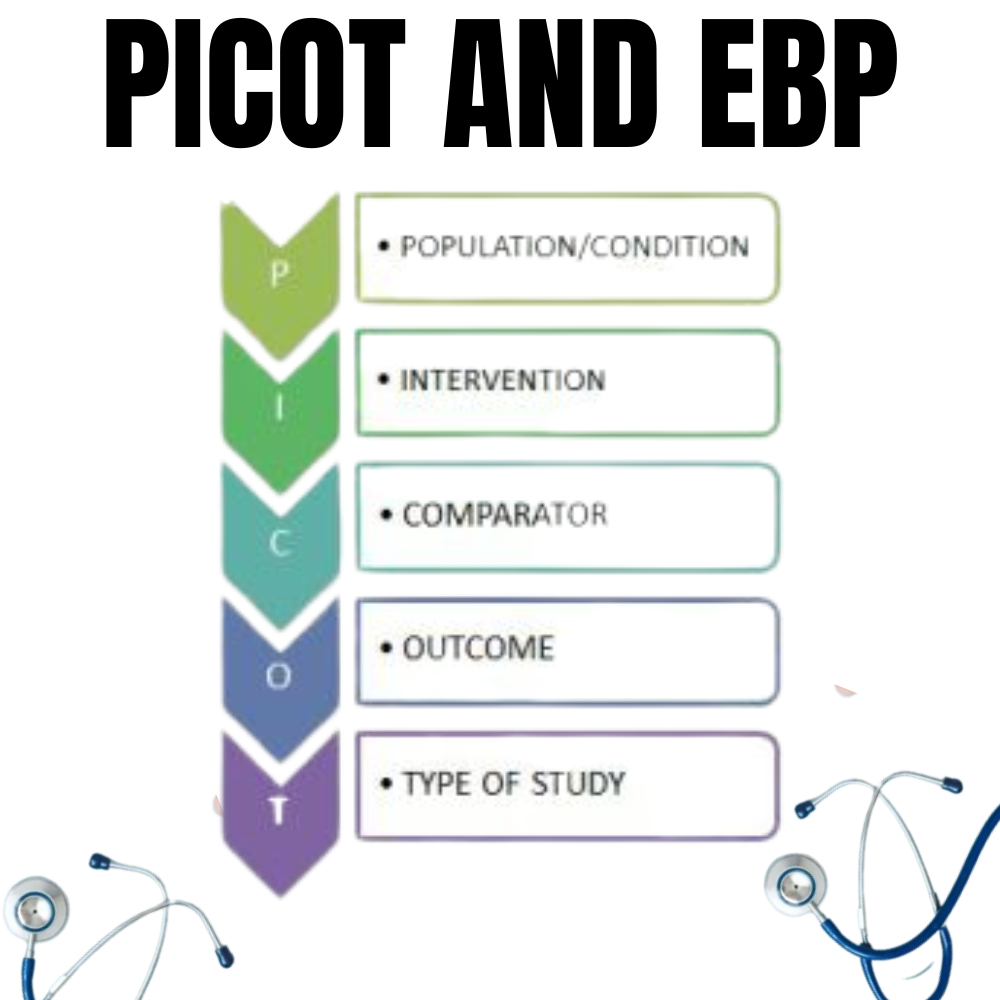
PICOT and EBP
Modern healthcare must incorporate evidence-based practise (EBP) to guarantee that patients receive care that is supported by the greatest available data. However, putting EBP into practise is not always simple, and practitioners must carefully assess the sources of information they rely on when making decisions. The PICOT paradigm, which stands for Patient/Population, Intervention, Comparison, Outcome, and Timeframe, is one common framework for doing healthcare research. We will examine the PICOT and EBP model’s link, how it can be used to direct the creation of research questions, and how to choose the best therapies in this article.






